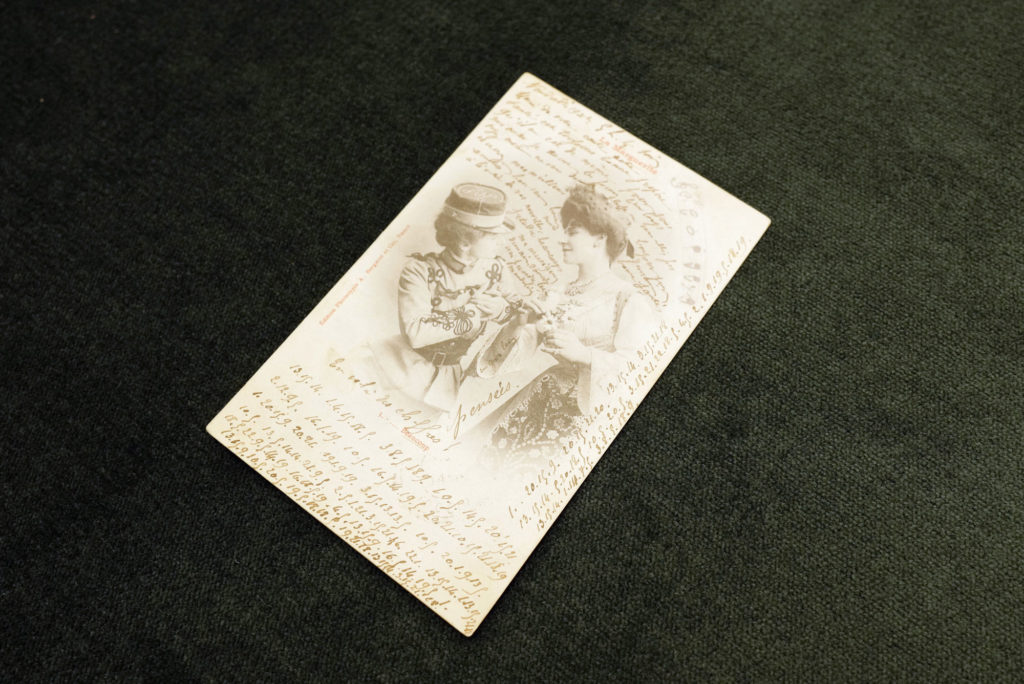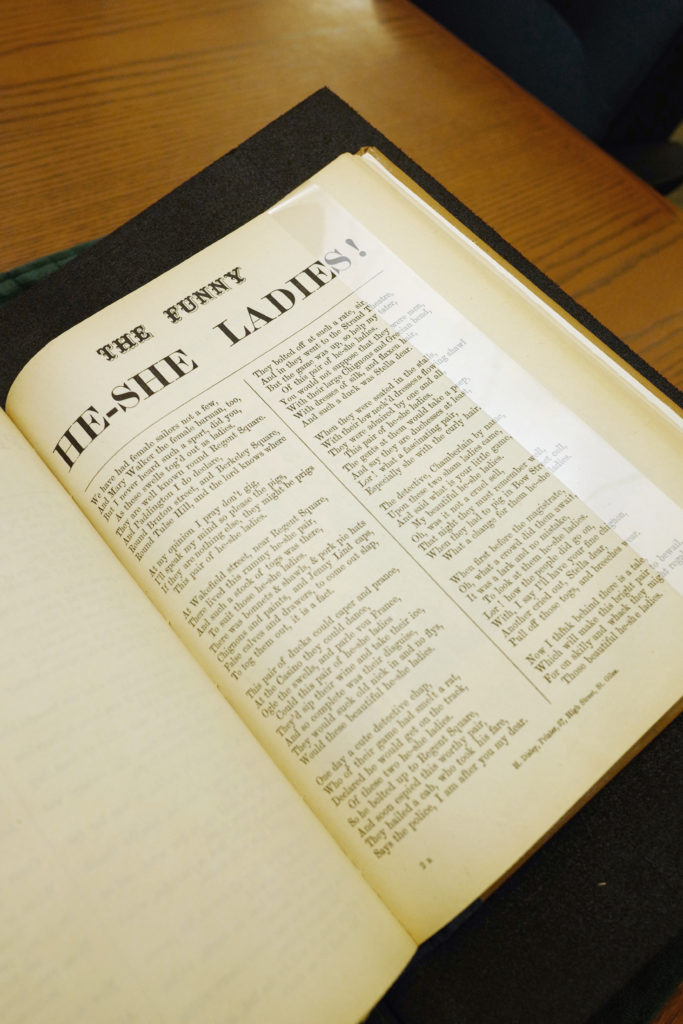Secret love letters and languages: UBC exhibit offers Pride Week history lesson
As love notes go, this one might seem rather ordinary: “My beloved darling, I never forget you. I think about you every day.” But what if you found out it was a secret message from 1902 in France, written in code between two women?
As love notes go, this one might seem rather ordinary:
“My beloved darling, I never forget you. I think about you every day.”
But what if you found out it was a secret message from 1902 in France, written in code between two women?
That is what Karol Pasciano, a University of British Columbia master’s student in English literature, discovered when she cracked the code on a postcard at the UBC Library exhibit, A Queer Century, 1869 – 1969.
The postcard, loaned from a private collection, appears mundane at first. The writer asks, in French, about the recipient’s health and family. However, its cover image of two women, and the alphanumeric code written around the perimeter, makes it clear that this is a note between lovers. A curious Pasciano headed home from the exhibit and spent two hours deciphering it.
“Quite romantic and tender,” was Pasciano’s assessment. “Living in a strictly heteronormative society, these women certainly couldn’t express their love for one another openly like this. [They were] testing the boundaries of what they could do, how they could communicate how they felt.”
A Queer Century, 1869 – 1969 makes UBC Library’s Rare Books and Special Collections a great place to learn about queer history during Pride Week in Vancouver. The exhibit includes the aforementioned postcard with Pasciano’s translation, and also pays tribute to a number of 2019 anniversaries including the 50-year anniversary of the Stonewall riots in New York City which launched the modern gay rights movement.



UBC Language Sciences member Kyle Frackman, an associate professor in the department of Central, Eastern, and Northern European studies, co-curated the exhibit along with Gregory Mackie, an associate professor with the department of English language and literatures.
A Queer Century, 1869 – 1969 highlights how many of the conversations occurring today in society are not new, said Frackman. Discussions about how people identify themselves, pronoun use, washroom usage and how to dress can be found in literature from Berlin going back to the 1920s and early 30s.
“I think people think this is the first time we’ve actually encountered this issue, and we’re actually going around in a cycle again,” said Frackman.
The multilingual exhibition uses the term “queer” to describe whatever is not heteronormative, and illustrates not only that queer history goes way back, but also that standards of acceptability have always been fluid. While the project focuses on European and North American materials from a limited time period, sexuality and gender have much deeper histories if one expands the focus to include other parts of the world and past centuries.
“There has always been moral panic about sexuality. It just focuses on different things with cultural and historical change,” said Mackie.
Some of the rare and interesting items you can see in the exhibition include:
- Vindex, a pamphlet from 1864 that makes one of the earliest arguments for the existence of homosexuality as an identity
- One of only two known dictionaries of Polari, a secret language used by gay people and allies in Britain
- A Guide for the Naive Homosexual, a 1971 pamphlet authored by Vancouverite Roedy Green, which invites interested Vancouver visitors to come over to the author’s address for a cup of tea and a chat
- The Funny He-She Ladies!, a poem from circa 1871 about the Boulton and Park scandal, where two men, Ernest Boulton and Frederick Park, were arrested for wearing women’s clothes. The trial of “Fanny and Stella,” as Ernest and Frederick were also known, ended in acquittal.
“These materials belong to the people of British Columbia,” Mackie said. “The only barrier is that you have to know where to look.”
Event details
What: A Queer Century, 1869-1969
When: Monday-Friday, 10 a.m.-4 p.m., until Sept. 11.
Where: UBC Library Rare Books and Special Collections, Level 1, Irving K. Barber Learning Centre, 1961 East Mall, UBC
Note: The exhibition features some adult material that may not be appropriate for children.



